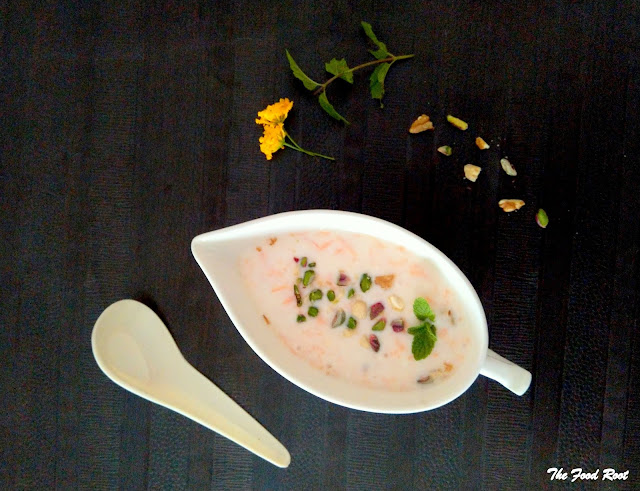There is no better reward than walking into your garden and picking up your own fresh, homegrown
herbs. They are easy to grow and can add lots of flavors to your recipes without adding calories. You can use them in
soups,
salads,
smoothies, sauces, stews, and
dips. Herbs are mostly sown in spring in 2-3 intervals. You can grow them from seed or buy a baby plant from nursery or supermarket. They don't need much care and attention. You just need to feed them with good soil and place it somewhere where it can get plenty of sunlight and air, and water it regularly.
Beginner's guide for growing herbs in pots
While setting a herb garden first think and ask yourself what all herbs you want to grow? What are the climatic conditions of your place? Do you want to grow these herbs in a pot, container, garden or you want to set up your deck, patio or balcony. If you a growing them indoors, you should be able to control the environment in terms of humidity, sunlight and temperature. If you are a beginner, i would suggest
try growing herbs in pots or containers.
Tips for growing herbs
1. What Herbs Should I Grow
Make a list of what all herbs you want to grow. Do you want to grow them for
culinary or medicinal purposes or both? There are so many herbs to choose from. You can grow whatever works for you. The purpose is to grow your own food. Just be creative and do a bit of research while growing your favorite herb. Below is the list of some of my favorite herbs;
Annual
Basil,
Holy Basil, Cilantro, Dill, Garlic, Carom and Parsley
Perennial
Mint, Oregano, Chives, Lemon Balm, Sage, Lavender, Ginger, Thyme and Rosemary
2. Find a suitable location for a herb garden
You don't always need a large space to begin. You can start planting your herbs in a smaller area as well. You will be surprise to see so much can be grown in smaller places as well but this hugely depends on your climate, weather and soil.
3. Pick the right containers and ensure the drainage
Pick the garden containers with drainage holes to keep the sufficient place for the roots when they grow. There are varieties of pots to choose from. They are made of terracotta, metal, clay etc. I prefer choosing clay pots as they help in drainage and tend to dry out quickly.
Most of the herbs like Basil, Cilantro, Lavender etc. grow well in containers but herbs like Mint, Lemon Balm should be planted separately in pots or garden as they bushy and spread all over.
4. Pair herbs in same planter or plant them individually
You can group as many as herbs in one big planter or in several other small pots. This of course depends, if your herbs enjoy the similar climatic conditions. So, be careful and pick out the plants with similar growing requirements to grow in the same planter.
For example, Parsley and Basil enjoy the similar growing requirements, they love more water, you can pair them together in a same planter whereas, Rosemary and Thyme likes it dry, so you need to keep them separate in other planters.
5. Planting
If you are growing the herbs from seedlings than remember to read the packet instructions carefully. It will tell you about how to sow the seeds. You can also choose to purchase young healthy plants from the nearest nursery store or supermarket and then transfer the entire plant into the container, making sure that the roots are well planted.
6. Feed your plants
Feed them with good soil and place it somewhere where it can get plenty of sunlight and air, and water it regularly.
Soil
Herbs can thrive in garden soil but I prefer to use organic potting soil mix while planting them in pots or containers. Avoid using soil from the outside as it may be contaminated.
Sunlight
While planning your herb garden, choose a location where the temperature is neither too hot nor too cold. The herb plants needs plenty of sunlight so keep your plants in a sunny location to grow well. You need at-least 4 to 6 hours of good sunlight until your herbs are ready to harvest.
For example, herbs like Rosemary, Thyme and Lavender, Oregano, Dill and Garlic perform best in full sun, whereas, herbs like Parsley, Mint, Chives and Lemon Balm requires partial sunlight and requires shade.
Water
Provide them with plenty of fresh water but be careful not to over water them. Certain herbs like Oregano and Rosemary prefer well drained soil. And, some herbs like Mint and Parsley like more moisture.
7. Harvesting
Harvest your herbs on time to ensure fresh growth and prune your plants regularly to keep them growing well. Good pruning keeps the plant bushy, green and healthy.
Like in case of Basil or Mint plants, you need to pinch off the top set of 2-3 leaves, this encourages them to have a bushy growth.
So, what are your favorite herbs? Do you grow your herbs in containers or do you set up your deck, patio or your balcony garden. How do you use herbs in your recipes? There are varieties of recipes you can try with your favorite herbs. Have you tried our
mint-cilantro dip recipe yet? It's a tangy and exciting combination of mint, cilantro and raw mango along with a kick of green chilli. It pairs well with salads, chips and taste great when spread on sandwich and wraps. You are going to love it!
I hope you've enjoyed our first post in herb-gardening series and are inspired to create one!
Happy Gardening!


